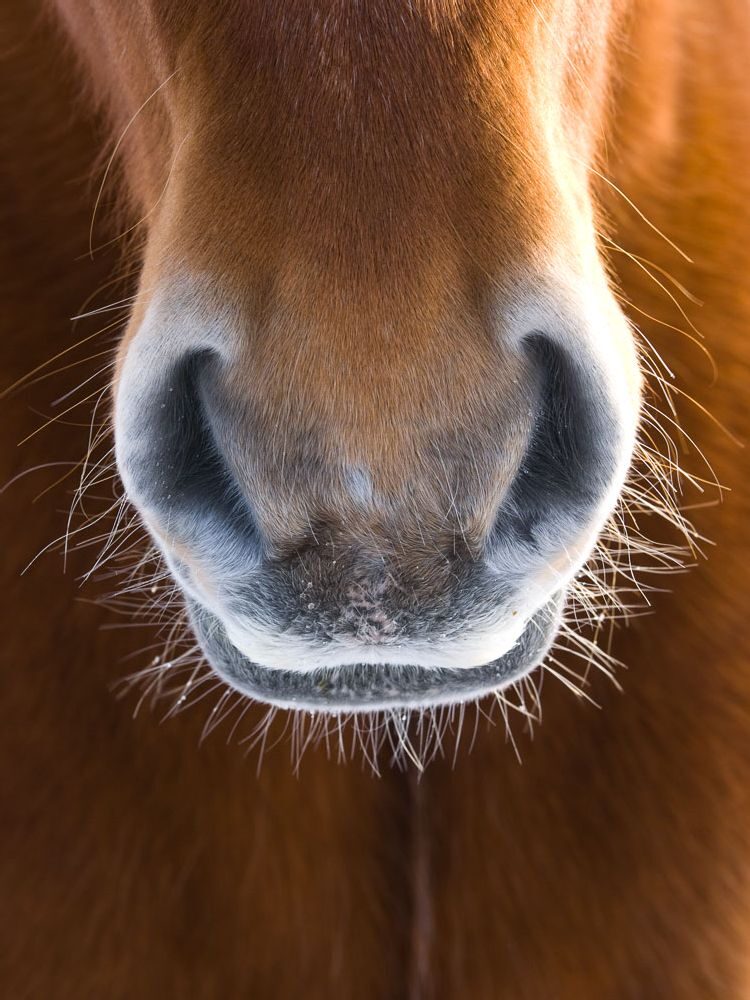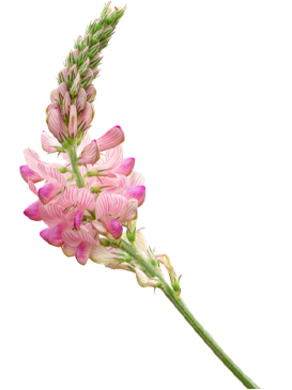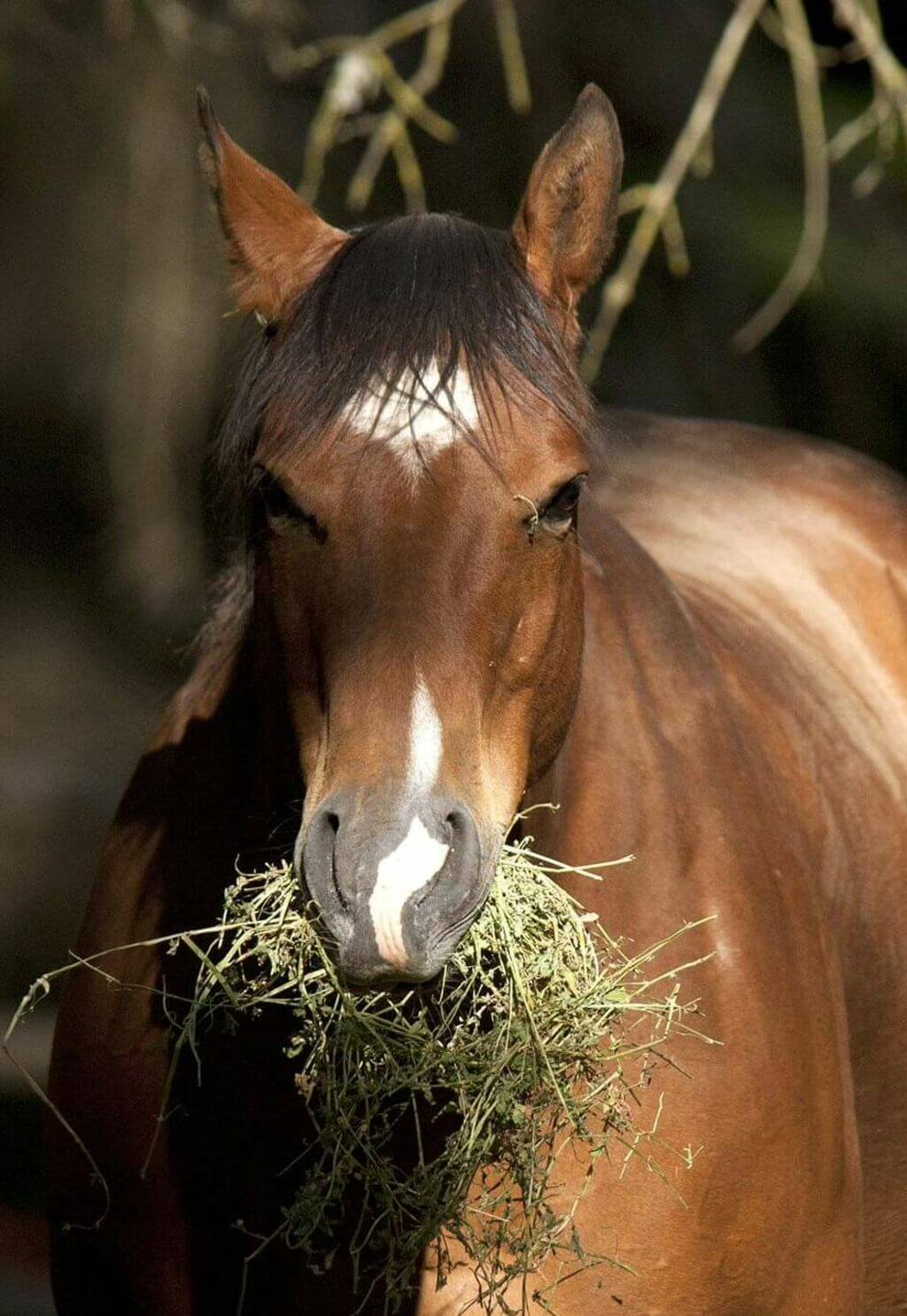When you switch your horse to Metazoa, you and your horse will have to get used to it. Therefore, we have developed a protocol that allows you to choose to which level you want to go:
The vision: from sugar burning to fat burning
Originally, horses ran around in the wild. Wheat and spelt did not yet exist and grains were available in very limited quantities. A horse's digestive system was set up to burn fat. Nowadays, horses' menu consists largely of grains and these contain many sugars that a horse cannot digest as well. The result is poorer intestinal health, which can lead to all kinds of complaints.
In practice:
all contemporary horses lack vitamins and minerals In the wild, horses can bring variety to their menu themselves, allowing them to get enough vitamins and minerals. In stables and pastures, of course, it is different. There are far fewer grasses and herbs in forage today, and your pony or horse also has no access to other sources of nutrition (tree bark, shrubs, mushrooms, clay minerals). Your horse will naturally follow the impulse to supplement deficiencies by continuing to eat. With Metazoa FitRight, you can help him with that.
The type of horse:
do you have a coldblood or a warmblood horse? You know, of course, that there are cold-blooded and warm-blooded horses. You can see this difference on the outside, but it is also noticeable on the inside. The digestive system of a warm-blood horse has evolved further and can therefore handle sugars better than a cold-blood horse. It is even closer to the primal horse. You also notice this difference when you want to switch to fat burning. With warm-blood horses, you switch over more slowly or use FItRight purely as a supplement.
The target weight: decide what weight you think is ideal for your horse
By default, a horse loses weight at the transition from sugar burning to fat burning. That can be pleasant, but of course you don't want a lean horse. So before switching, determine the ideal weight for your horse with this formula: (chest circumference in cm)² x (length in cm) / 11,880 = weight of the horse in kg. If losing weight is too fast for your liking, especially with a warmblood horse, take more time for the changeover (supplement with up to 3kg of MuscleFit HP23 per day) or use FitRight as a supplement only (level 1).
The transition levels: Metazoa as feed or supplement.
Switching to fat burning is no small thing for a horse's body. Therefore, give your animal plenty of time to get used to it. That's why Metazoa recommends working from the following three levels. Pay close attention to how your horse reacts, it will naturally indicate what is good for it. You can switch completely, but you can also stick to level 1 or 2.
Level 1: you supplement vitamins and minerals in addition to the current menu.
Level 2: you will cut down the sweet kibble to half and give more roughage.
Level 3: make unlimited roughage, FitRight and MuscleFit HP23 the basic menu.
Remember, the basis of a healthy horse's menu is roughage and it should have unlimited access to it. Our products supplement the nutrients missing in roughage.
Important information before you start
A pony or horse naturally eats the vitamins and minerals it needs and stops automatically when it has enough of them. So pay attention to how your horse eats: by eating quickly, it indicates that it needs more minerals. If your horse starts to gulp, especially if it is food envy, make sure you soak the Metazoa FitRight pellets in water for five minutes before giving them!
It is normal for your pony or horse to lose some weight when you switch to fat burning. If that goes too fast for your liking, there are two ways to steer.
If your horse keeps losing weight, go back to an earlier level. Then this is the optimal menu for your horse or pony. Still in doubt? Then contact us ((+31)085 0787979).
Until humans began farming 14,000 years ago, horses roamed the wild. No grains were grown and spelt and wheat did not yet exist. Nowadays, many horses are fed kilos of grains and their digestion has not adapted to this during evolution. The problem is that grains contain starches, which consist of chains of glucose molecules that have to be broken down. This is done by an enzyme called amylase. Horses do not produce enough amylase to properly digest the starch in grains. The result: the undigested starch molecules end up in the large intestine, where bad intestinal bacteria break them down.

In the process, toxins are formed that affect intestinal health and can thus cause a range of health problems in the animal. The connection between poor intestinal health and a sick horse is not made by everyone.
Horses are therefore designed to burn fat, which provides energy evenly, so that the muscles work from rest and strength rather than short bursts. A well-balanced menu for horses therefore consists for the most part of roughage (hay and/or grass). But this does not provide as much variety as grazing in the wild. There are far fewer grasses, various herbs and other food sources (trees/tree bark/shrubs/mushrooms/clay minerals) in it than actually needed. With our current roughage alone, your animal can become deficient in minerals, vitamins and other important substances such as proteins. Besides roughage, horses are often fed muesli, pellets and slobber containing grains, molasses and soya. This gives the horse a lot of ballast substances which can cause health and behavioral problems. Your horse is used to it and likes it, but it is not good for the digestive tract and overall metabolism.
In practice, in addition to 2% of body weight in dry matter from roughage, your horse needs supplementation with high-quality, precisely formulated minerals and vitamins for optimal immune system function. And proteins (HP23) for building muscles, ligaments, tendons and organs. This is even more important for horses that are used for training. This is the basis of the Metazoa method. Supplements that complement what your horse lacks in today's roughage. As natural as possible and above all without harmful ballast substances. The great thing is that a horse indicates his own needs for minerals and vitamins. Especially of the Superfit products (minerals and vitamins) the horse will eat a lot in the beginning. As soon as the deficiencies are made up, the horse will reduce its intake automatically. This can vary from week to week, because it is a natural process. The faster the horse eats, the more minerals it needs. To help you it is advisable to follow the following steps of the protocol.
Products: Superfit, HP23, healthy reward candies
Period: 6 to 8 weeks
What will you do?
You just feed the roughage, like hay, (about 2% of the body weight) and what you normally feed your horse. In addition, you are going to supplement deficiencies with minerals and proteins:

Your horse may become more supple and, if it is normally nervous, calmer. It may gain a little more self-confidence
Nice to know
A horse naturally eats the vitamins and minerals it needs and stops by itself.
What can you notice?
Your horse may start to lose weight because it is slowly switching from burning sugar to burning fat. The coat will also become shinier.
Nice to know
By burning fat, your horse has fewer energy peaks and troughs. This allows it to perform better and more evenly.
What can you notice?
Your horse is less likely to get gas colic and his coat will shine more, even during the molt. In addition, some horses will suffer from lumps and stripes on the skin for a few days to a few weeks. This is due to the removal of accumulated waste and is therefore not an allergy. If necessary, you can postpone the phasing out until the effect has disappeared. It may be that your horse has an underlying problem that comes to light now that the immune system is better able to do its work. If so, contact us so we can refer you to a nutritionist or a veterinarian
NaturalFit Alfalfa
This is only the structural and fiber-rich stalk of the alfalfa plant. By chewing a lot, the horse produces more saliva. With a positive effect on digestion.
NaturalFit Esparcette
Besides an esparcette pellet, you can also choose the whole esparcette plant to support the intestinal flora.
CareFit Timothy
Timothy is a type of grass (Phleum Pratense). The whole plant is mowed, dried and pressed into a pellet. It has a low sugar content and a lower protein content than alfalfa.

